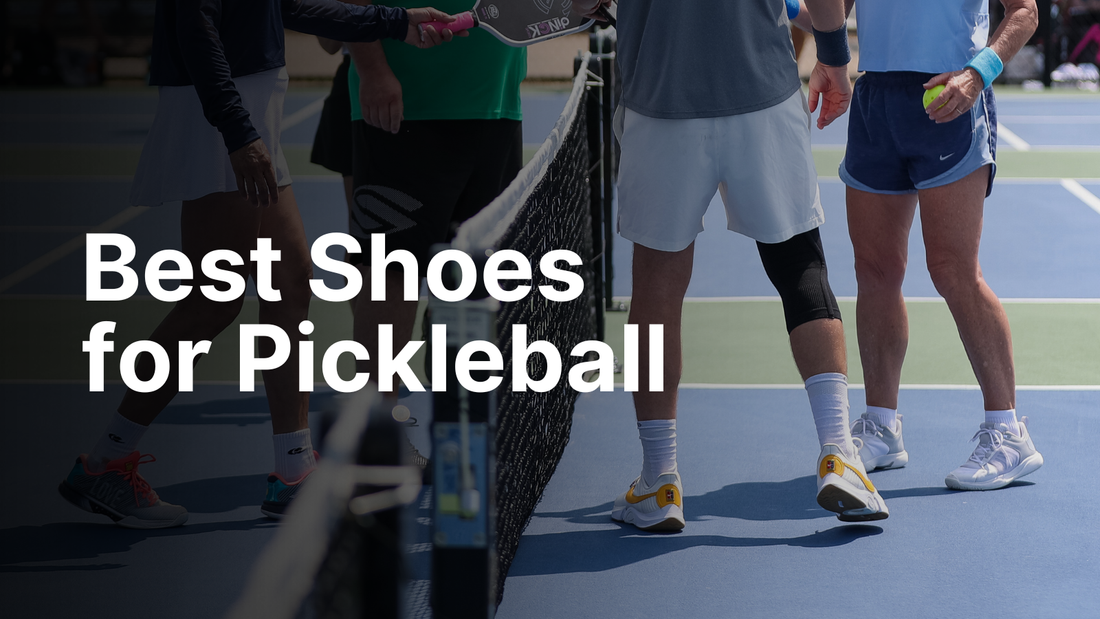The Best Shoes for Pickleball: Features, Fit, and Real-World Tips to Move Better and Play Longer
Picking the right footwear might be the most underrated performance upgrade in pickleball. Whether you’re learning the kitchen, driving third balls, or sprinting for a sharp crosscourt dink, the right shoes translate your intent into crisp footwork—and help keep you healthy enough to play tomorrow. In this guide, we’ll break down what actually matters when choosing the best shoes for pickleball, how to match features to your court surface and style, and practical ways to prevent injuries and extend the life of your shoes.
Why Pickleball Shoes Matter More Than You Think
Pickleball is a lateral, stop‑start sport with rapid changes of direction, short explosive steps, and frequent split steps at the non-volley zone. Unlike running shoes—built to go forward—court shoes are engineered for multi-directional movement and stability. That design difference shows up in your balance, traction, and confidence on every point.
Health pros also emphasize the value of proper footwear for injury prevention. As participation in pickleball has surged, so have overuse and acute injuries. Medical experts recommend supportive, sport-appropriate shoes plus a sensible warm-up and strength routine to reduce risk. For a deeper look at common issues and prevention tips, see Cleveland Clinic’s overview of pickleball injuries and mitigation strategies at https://health.clevelandclinic.org/pickleball-injuries, as well as safety guidance from USA Pickleball at https://usapickleball.org/what-is-pickleball/health-and-safety/.
The Core Features of Great Pickleball Shoes
The best shoes for pickleball share a handful of design traits that help you move quickly and safely without sacrificing comfort. Use this checklist as your foundation.
1) Lateral Stability and Upper Support
Look for a sturdy heel counter, a firm midfoot wrap, and sidewall or outrigger support. These elements resist ankle roll and keep the foot centered over the platform during hard cuts. Mesh uppers should be reinforced with overlays in high-stress zones (lateral forefoot and toe guard).
2) Traction You Can Trust
Outdoor courts (asphalt/concrete with acrylic coatings) reward tacky rubber with a durable, abrasion-resistant compound and a tread pattern that grips on dust and light debris. Indoor wood or synthetic gym floors favor a slightly softer rubber that bites cleanly without excessive stick. A herringbone or modified herringbone pattern is a proven all-around choice.
3) Midsole Cushioning—Balanced, Not Mushy
You’ll want enough cushioning to absorb repeated split steps and landings, but not so much that you feel disconnected from the court. Court-specific foams or EVA blends tuned for stability usually strike the right balance. If your knees or heels are sensitive, prioritize models with a visible heel cushion or a slightly rockered heel crash pad.
4) Ride Height and Court Feel
Lower stack heights and wider bases promote confidence on quick lateral moves. Shoes that are too tall or overly soft can feel tippy during aggressive side-to-side play.
5) Weight vs. Durability
Lighter shoes feel fast but may trade away durability. If you slide on defense, drag your toe on dinks, or play outdoors several days a week, consider a sturdier build with reinforced toe/medial guards and a more robust outsole.
6) Fit That Matches Your Foot
Pickleball sessions can stretch two hours or more. A secure heel, a locked midfoot, and a forefoot that allows your toes to splay are non-negotiable. If you have wide feet, look for wide/2E options or models that run roomy in the toe box.
Indoor vs. Outdoor: Match Your Shoe to the Court
Choosing the best shoes for pickleball depends heavily on where you play most. Here’s how to dial it in by surface.
Outdoor Courts
- Outsole compound: Prioritize abrasion resistance for rougher acrylic/asphalt surfaces.
- Tread pattern: Herringbone or multi-directional textures that shed dust and small debris.
- Upper durability: Reinforced toe and medial forefoot for toe drags and slides.
- Breathability: Outdoor heat builds quickly; mesh panels help manage temperature.
Indoor Courts
- Grip on clean floors: Slightly softer rubber that grips gym surfaces without squeak-locking your foot.
- Non-marking outsole: Essential for most indoor facilities.
- Lightweight feel: Indoor play often emphasizes quick exchanges and rapid resets—lighter shoes can shine here.
If you split time between indoor and outdoor play, consider rotating two pairs tuned to each surface. It’s kinder to your body—and your gear.
Choose by Playing Style
We all move differently. Here’s how to align features with your on-court identity.
All-Court Competitor
- Profile: Balanced mix of drives, resets, and counters.
- Shoe traits: Medium cushioning, broad base, reliable multi-surface traction, and reinforced upper.
Kitchen Maestro (Control/Dink-First)
- Profile: Lives at the NVZ, prizes touch and fast micro-movements.
- Shoe traits: Lower stack for court feel, excellent lateral containment, responsive (not plush) midsole.
Power Driver (Speed & Offense)
- Profile: Heavy topspin drives and aggressive poaches.
- Shoe traits: Stable chassis with an outrigger, tacky traction for fast stops, durable toe guard for frequent toe drags.
Endurance Grinder
- Profile: Long sessions and tournament days.
- Shoe traits: Slightly more cushioning, breathable upper, and a fit that stays comfortable as feet swell.
Sizing and Fit: A Quick Field Test
Trying on court shoes? Use this 60-second checklist:
- Heel lock: Minimal slippage when you jog or make side shuffles.
- Midfoot hug: Snug through the arch with laces; foot doesn’t slide forward on hard stops.
- Toe box: A thumb’s width in front of your longest toe; no pinching across forefoot.
- Stability feel: Perform two or three explosive lateral cuts—no wobble or tipping sensation.
- Insole swap: If you use orthotics or aftermarket insoles, bring them. Re-test fit and volume.
Foot Types and Common Issues
Foot mechanics can nudge you toward specific features:
- Overpronators (collapse inward): Favor shoes with medial support and a stable platform. Consider structured insoles.
- High arches (underpronation): Seek more cushioning under the midfoot and heel for shock absorption.
- Wide forefoot: Look for wide sizes or naturally roomy toe boxes; avoid narrow, tapered shapes.
- Heel pain/plantar fasciitis: A slightly higher heel-to-toe drop and firm heel counter can help.
If pain persists, consult a medical professional. General safety and footwear suggestions from USA Pickleball can help you frame that conversation: https://usapickleball.org/what-is-pickleball/health-and-safety/.
Injury Prevention: Warm-Up and Strength Pair Perfectly with Good Shoes
Even the best shoes for pickleball work best when paired with smart prep. A short dynamic warm-up boosts mobility and primes your nervous system for the quick footwork the sport demands.
5-Minute Pickleball Warm-Up
- Light jog + sidesteps (60 seconds): Get the heart rate up and wake up lateral movement.
- Leg swings (30 seconds each leg): Front-to-back and side-to-side for hips and hamstrings.
- World’s greatest stretch (60 seconds): Lunge with T-spine rotation on each side.
- Ankle prep (60 seconds): Calf raises and ankle circles; add short pogo hops.
- Short shuffles and split steps (60 seconds): Mimic on-court patterns before you serve.
To reduce overuse risk, add 2–3 sessions per week of simple lower-leg and hip strength: calf raises, tibialis raises, glute bridges, monster walks, and single-leg balance holds. Cleveland Clinic’s guidance underscores how strength and warm-ups reduce the odds of common strains and sprains: https://health.clevelandclinic.org/pickleball-injuries.
Care, Rotation, and When to Replace
You’ll feel it when traction fades or cushioning bottoms out—stopping takes longer, and your feet fatigue sooner. Typical lifespan is 40–80 hours of hard outdoor play or 80–120 hours indoors, depending on your movement, body weight, and surface. To stretch value:
- Rotate pairs: Let midsoles rebound and uppers dry between sessions.
- Clean outsoles: Brush off dust and rinse light debris to restore grip.
- Air dry only: Heat can deform foam and adhesives.
- Check wear patterns: Uneven outsole wear can signal gait issues—consider a form check or supportive insoles.
Replace shoes when the outsole tread is smooth in key braking zones, the midsole feels flat, or the upper shows tearing near flex points.
Budget and Value: Where to Spend, Where to Save
- Entry-level ($60–$90): Good for casual or once-a-week players; expect basic cushioning and lighter durability.
- Mid-tier ($90–$130): Strong value sweet spot—reliable traction, better support, and reinforced uppers.
- Premium ($130–$170+): Court-specific foams, enhanced chassis stability, and the toughest outsoles for heavy play or tournaments.
If you play outdoors frequently, spend on outsole durability and upper reinforcement. If you’re an indoor league regular, prioritize traction formulation and a secure, agile fit.
Common Mistakes to Avoid
- Playing in running shoes: Designed for linear motion; they can increase the risk of ankle roll during lateral cuts.
- Going too soft: Plush midsoles feel comfy but can compromise stability under quick direction changes.
- Ignoring width and volume: A shoe that’s too narrow or shallow can cause numbness and blistering—and slow you down.
- One-shoe-fits-all-surfaces thinking: If you split indoor/outdoor time, you’ll benefit from two purpose-built pairs.
FAQs: Your Top Shoe Questions, Answered
Are tennis shoes fine for pickleball?
Yes—court-specific tennis shoes are engineered for lateral support and are generally a solid choice for pickleball, especially outdoors. Just match the outsole to your surface.
How tight should my shoes fit?
Secure at the heel and midfoot with a thumb’s width of space in front of your longest toe. Your foot shouldn’t slide forward on hard stops.
Do I need insoles?
If you have arch pain, plantar fasciitis, or a history of overuse injuries, a supportive aftermarket insole can add structure. Test for volume and comfort before buying.
What about ankle braces?
If you’re returning from an ankle sprain or have chronic instability, a lightweight brace can provide extra confidence. Pair with stable shoes and consult a clinician if needed.
How often should I replace my shoes?
As a rule of thumb, every 40–80 outdoor hours or 80–120 indoor hours. If traction fades or the shoe feels flat and unstable, it’s time.
Sample Buying Checklist
- Primary surface: indoor, outdoor, or both.
- Stability needs: history of ankle issues or neutral.
- Fit: width options, toe-box room, secure heel.
- Durability: toe drag protection, reinforced upper, robust outsole.
- Cushioning preference: responsive vs. plush.
- Weight: quick-feel agility vs. tank-like durability.
How the Right Shoes Complement Your Training and Rating Journey
Footwork separates good from great. The best shoes for pickleball support every split step, slide, and scramble—so you can focus on reads, hands, and shot selection. If you’re working on improving against different styles—bangers, counterpunchers, and kitchen tacticians—dialed-in footwear helps you repeat high-quality reps without wearing down.
To get consistent, level-based matches that make improvement measurable, track your progress with the UTR Sports ecosystem. Create your pickleball player profile, find local match play and events, and build a results history that reflects your current level. Consistent, competitive reps are how your game (and confidence) grows.
About UTR Sports
UTR Sports connects players to competitive play and a global community across racquet sports. Create your free account to find events and opponents at your level, track results, and chart your progress over time. Ready to play more—and play better? Sign up free today.
Further reading on safety and smart preparation for the court: USA Pickleball’s Health & Safety hub at https://usapickleball.org/what-is-pickleball/health-and-safety/ and Cleveland Clinic’s guidance on common pickleball injuries at https://health.clevelandclinic.org/pickleball-injuries.
For more topics, see below:














